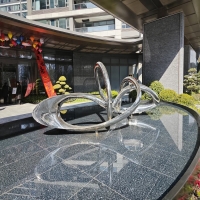Welcome to the website for landscape facilities products and knowledge.
How does the design of a landscape round trash can influence its resistance to fading from pollution?
The design of a landscape round trash can plays a crucial role in its ability to resist fading caused by pollution. Several key factors contribute to this durability.
1. Material Selection: High-quality materials like UV-resistant polyethylene or powder-coated metal are often used to minimize color degradation from sunlight and airborne pollutants. These materials inherently repel chemical reactions that lead to fading.
2. Structural Design: A rounded shape reduces surface exposure to direct sunlight and pollutants, distributing wear more evenly. Additionally, seamless designs prevent dirt and chemicals from accumulating in crevices, which can accelerate fading.
3. Protective Coatings: Many modern trash cans feature anti-fade coatings or laminates that act as a barrier against pollutants like acid rain, smog, and industrial emissions. These coatings are often hydrophobic, preventing water-based pollutants from penetrating the surface.
4. Color and Finish: Darker colors and matte finishes tend to show fading less prominently than lighter or glossy surfaces. Some manufacturers use fade-resistant pigments that maintain vibrancy despite environmental stressors.
5. Maintenance Features: Designs with smooth, easy-to-clean surfaces allow for regular washing, which removes pollutant buildup before it can cause lasting damage.
By integrating these design elements, landscape round trash cans can maintain their aesthetic appeal and functionality even in highly polluted environments, offering long-term value for urban and outdoor settings.
Related search:

Recommendation
Abstract art sculpture, stainless steel metal sculpture, large-scale water feature sculpture